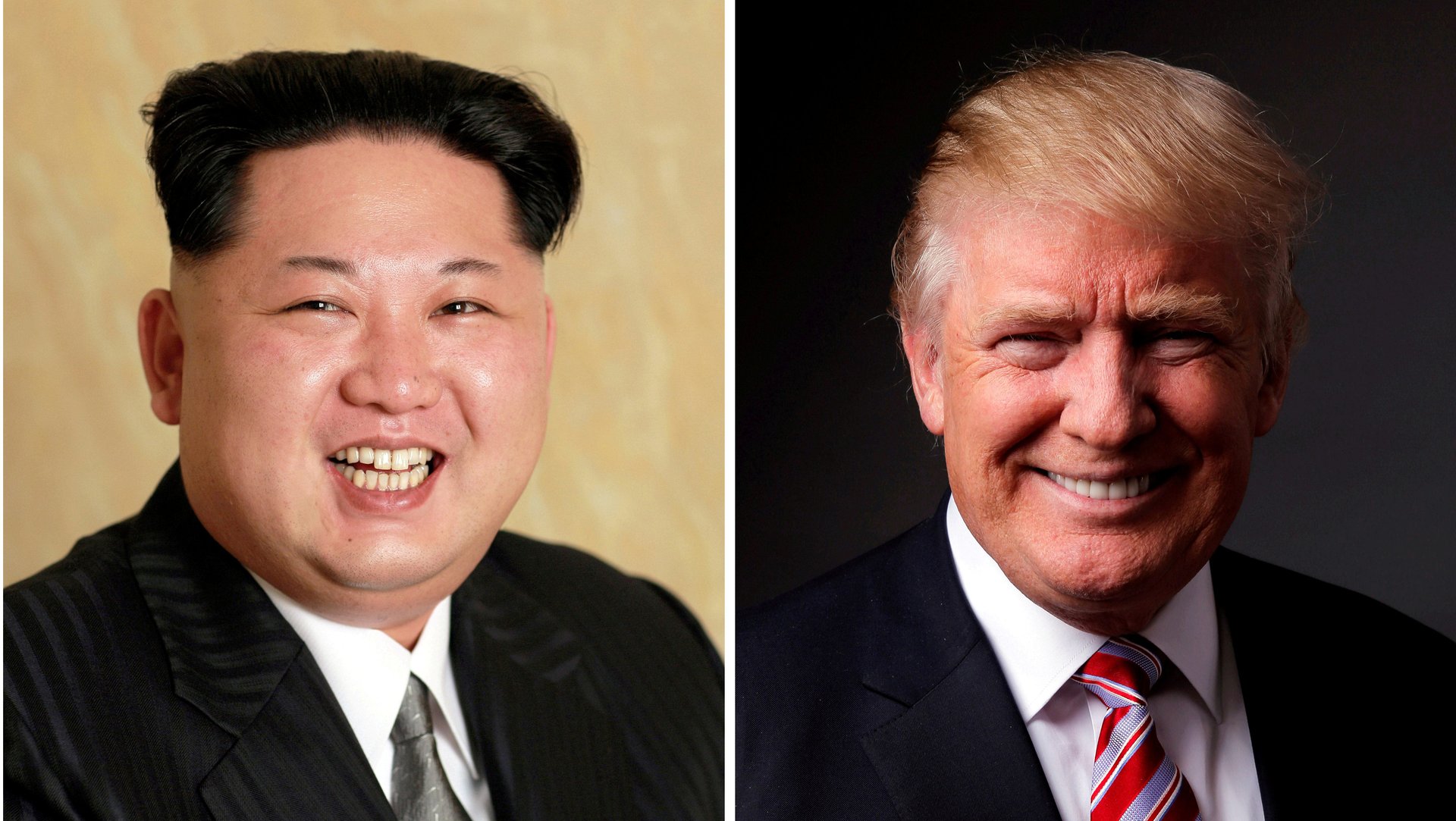A North Korean propaganda film is coming true, thanks to Donald Trump
In 2012, the film division of North Korea’s propaganda machine released parts 2-5 of a movie entitled The Country I Saw (part 1 came out in the late 1980s). The movie provided insight into what the country hoped to achieve with its nuclear-weapons program—namely, recognition from the US for the ruling regime, and normalized relations between the two nations.


In 2012, the film division of North Korea’s propaganda machine released parts 2-5 of a movie entitled The Country I Saw (part 1 came out in the late 1980s). The movie provided insight into what the country hoped to achieve with its nuclear-weapons program—namely, recognition from the US for the ruling regime, and normalized relations between the two nations.
Yesterday, Donald Trump accepted an invitation to meet from North Korean leader Kim Jong-un—acting basically in accordance with the film’s ending. The meeting, to take place by May, would be the first time a sitting US president has met with a North Korean leader.
The movie was described in-depth in 2012 by Jeffrey Lewis, head of the East Asia Nonproliferation Program at the Middlebury Institute of International Studies at Monterey, California, who wrote about it at 38 North, a website focused on North Korea. In the film, Lewis wrote, a Japanese professor of international relations learns to stop worrying about North Korea’s nuclear-weapons tests, seeing that they’re really a way to force the United States to engage with Pyongyang. Indeed, the climax of the movie is the US, after a North Korea nuclear test, having no choice but to send former president Bill Clinton to meet directly with Kim Jong-il, the late father of the current ruler.
Lewis wrote:
High-level contacts, such as summits and special envoys, are important evidence for North Korea that the world accepts the regime. The Country I Saw does much to reinforce the general view of a DPRK leadership that has set securing the legitimacy and stability of its regime as the over-riding foreign policy goal. That a visit by Bill Clinton instead of Bill Richardson [former US ambassador to the UN] is the big reveal at the end of the movie says a lot about North Korea sees its nuclear diplomacy.
In November, Kim Jong-un declared that his country had “finally realized the great historic cause of completing the state nuclear force.” In the same month, North Korea launched its third intercontinental ballistic missile, one that experts estimated put the entire United States within Pyongyang’s range, and in September its sixth nuclear test, which it claimed was a hydrogen bomb.
Now, following North Korea’s supposed realization of that goal—doubts linger about its ability to marry ICBMs and nukes effectively—the sitting US president has agreed to meet with Kim in person. That’s even better than a former US president doing so, as in the movie.
Of course, Trump insists Kim must get rid of his nuclear weapons. South Korean officials who met Kim earlier this week said that North Korea “made it clear that it would have no reason to keep nuclear weapons if the military threat to the North was eliminated and its security guaranteed.”
“Military threat” could refer to the US troops stationed in South Korea. North Korea consistently views joint drills by the US and South Korea as dress rehearsals for an invasion. What North Korea might be aiming for, then, is for the US to accept the legitimacy of the Kim regime, end the threats and sanctions against it, and withdraw its troops from the Korean peninsula. (Longer term, the goal might be a reunification that favors the Kim regime.)
But past attempts to get North Korea to denuclearize have ultimately failed, even when Pyongyang appeared to be willing, as it appears to be now. And over the decades the country has developed a network of tunnels so vast it’d be difficult to determine what weapons of mass destruction were hiding where.
In the movie, Lewis noted, North Korea’s place in the world is “entirely a function of missile and nuclear capabilities.” Kim giving those capabilities up does not seem like a realistic ending.